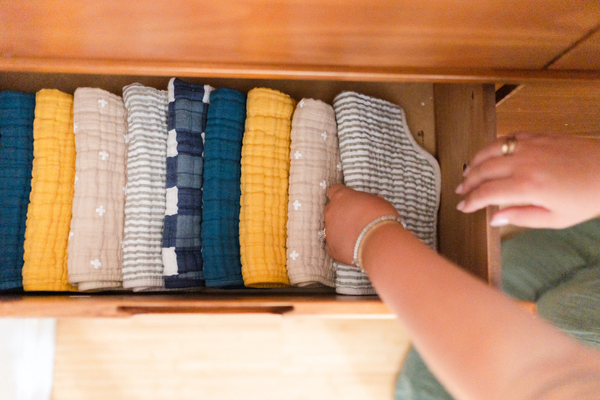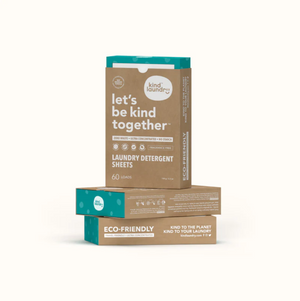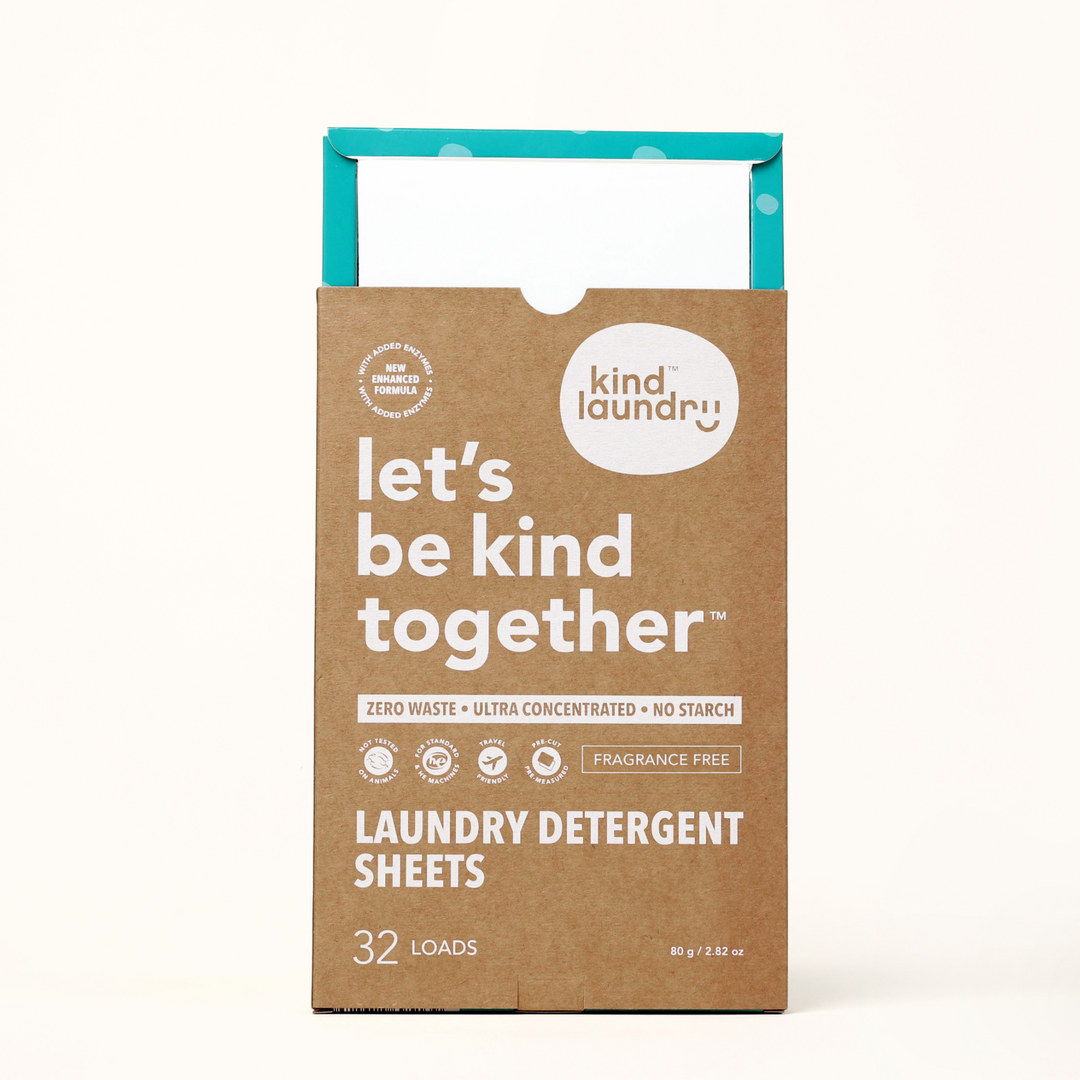How do you store winter clothes? When winter has ended, it’s important to store your winter clothes properly so that they’re ready to wear again the next season. Improper storage can result in your clothes being damaged by mold, pests, or sunlight – so choosing the right storage space is necessary.
The process of getting your winter clothes packed away will also help free up space in your wardrobe for all your summer and spring gear, helping you to stay organized. And it's an opportunity to declutter your wardrobe – deciding which items need to be repaired, donated to charity, or washed for storage.
Below we explore how to store winter apparel so that your jackets, coats, scarfs, gloves and other winter gear is ready to wear when you unpack it next year. This includes how to store winter clothes, tips on storing different types of winter clothes (such as delicates, sweaters, coats and accessories), and mistakes to avoid when storing winter clothing.
How to Store Away Winter Clothes ❄️🧥🧤
Do you want your coats, warm jackets, snow clothes, and woolen sweaters to still be looking stylish next winter? Then knowing how to properly store winter clothes is essential!
Below is a summary of the top tips for how to store winter clothes in summer, so that they maintain their condition and are ready to wear again next season.

Decide What Deserves Winter Clothes Storage Space
Before packing away your winter wardrobe, it’s best to check the condition of your clothes to see which items deserve to be stored, and which can be donated, repaired or thrown away.
If you’re wondering how to pack away winter clothes, a good starting point is to sort your winter clothes – getting them all together so you can sort through them methodically, creating different sorting piles.
One pile of clothes should be dedicated to garments that need to be repaired – making sure that the clothes are not so badly torn or damaged that they can actually be salvaged.
Keep another pile for clothes that you think you won’t wear again – whether it’s because you don’t really like them, never wear them, or because you are trying to make space for new fashion trends and colors. There are lots of people in need who may very much appreciate having clothes donated to them, and lots of charity stores which will accept donated and pre-loved clothing.
Next, make a pile of clothes that you want to keep and need to store away until next winter. If there are any clothes that need to be cleaned before storage, then you’ll want to make sure they are washed and thoroughly dried before storage.
Pick The Right Winter Clothes Storage Place
There are many different places and ways to store winter clothes. That includes closets, attics, basements, plastic containers, under-bed storage spaces, and garment bags.
You’ll want to choose the best place to store your clothes to keep them in good condition and away from mold and pests.
Avoid storing clothes anywhere that has mold, or where the clothing could be damaged or faded from light, heat or moisture. Attics and basements are generally not great storage areas, as they can be quite humid which can lead to mold and pests.
Here are some popular storage ideas:
- Ensure that any boxes you use have been thoroughly cleaned before you store clothes in them, and that they are dry and can seal well.
- Don’t pack too many clothes into your boxes, and allow some space for ventilation.
- Try to place the heaviest clothes at the bottom. And a pro tip is to label your boxes, or use transparent boxes so that you can easily find what you’re looking for next season.
- Avoid storing plastic containers anywhere where sunlight could heat and fade your clothes. Also avoid places that will get too much moisture or mildew.
- Delicate fabrics like silk or cashmere are best kept in fabric containers rather than plastic, so that they can breathe. But, you will also need to take precautions against pests like silverfish, by adding fragrant lavender or cedar wood sachets to your storage containers.

Wash and Dry Your Winter Apparel
Before you pack away all your warm woolen sweaters, fluffy scarves, or fleece jackets, it’s time to launder your winter apparel. This is particularly important for any clothes that have been worn quite a bit during the winter season.
If there are any stains on your clothes, it’s best to also treat those before storage, as they may otherwise set in and become extremely difficult to remove. And, if your clothes have any musty or sweaty odors, those can also set in during storage, so make sure they get washed too.
Another reason to wash your winter clothes before staring them away, is to prevent attracting pests like moths, silverfish, or mites that may be attracted to odors and dirt.
We recommend treating any stains using our Kind Laundry Vegan Stain Remover Bar, and to wash your winter clothes using our Laundry Detergent Sheets, being mindful of following the care instructions on your garment labels.
A pro tip for effective storage, is to make certain that clothes are completely dry before you store them away, as that could otherwise lead to mold, musty odors, and insects finding their way to your clothes.
Repair Damaged Winter Clothes
Whether your winter apparel has holes, tears, rips, or needs buttons or zippers to be replaced – it’s a good idea to take care of your clothes before storing them away.
If your clothing is too damaged to be repaired, then you can have the material recycled or up-cycled if you’re interested in sustainable living and want to be kind to the planet.
To repair your clothes, you may be able to do some sewing and mending yourself. Alternatively, you may need to find a local tailor or clothing repair services to help you.
As part of your clothing repair and maintenance checks, you get rid of piling on fleeces and sweaters using dedicated anti-piling tools or even household items like Velcro can help.

Use Plastic Containers
Plastic containers are a great way of storing clothes until next winter. Containers with lids that seal well, can help prevent insects and mold from getting into your favorite clothes and ruining them.
It can be useful to add a desiccant sachet to your container to help trap any moisture and prevent mold and mildew, which is particularly important in humid environments.
Plastic containers can be a really useful way of storing clothes, particularly if you’re looking for a solution for how to store winter clothes in small space. Plastic containers are stackable, so you can fit several on top of each other, taking advantage of vertical space instead of spreading your clothing storage throughout your home.
Donate Items You Will No Longer Wear
Donating your pre-loved clothes to charity is a great way of decluttering your wardrobe, while doing something good for your community. There are many people who could benefit from having new winter clothes to wear, and many places that facilitate distributing send-hand clothes.
Participating in the circular economy is also a great way of living more sustainably, so that one person's waste can be used as someone else’s treasured items. It helps prevent new clothes from needing to be manufactured, and helps to minimize waste.
So if you have clothes that you no longer wear, either because they no longer fit you, you don’t like them, they’re no longer in fashion, or you just don’t have space for them – then consider being charitable and giving them away.
In addition to local shelters and charity stores that you can donate your clothes to, many clothing chains accept pre-loved clothes and may even provide you with a discount for donating them.
And, if you don’t want to donate your clothes, you may also be inspired to use the fabric in a way that upcycles it into another treasured household item like a tablecloth, cushion cover, or if you’re great at sewing then another clothing item altogether. The possibilities are endless.

Use Garment Bags
There’s a bit of art when it comes to how to store clothes for winter. Certain delicate fabrics are best stored in garment bags. Garment bags help to protect your clothes from silverfish, mold, mildew, and other pests that can damage your clothing.
Most garments that have been dry cleaned should be stored in garment bags, but you’ll need to ensure they are dry and that the thin plastic wrapper that’s used to transport clothes in after dry cleaning is removed.
Suits and jackets are items that are best suited to being stored in garment bags. It helps to ensure that they don't get wrinkled. Now you know how to store winter jacket so that it will still look like its new next winter season.
When choosing a garment bag, make sure that they are breathable, otherwise they could make your clothes get too hot and humid, trapping moisture which can lead to mold.
When placing clothes into garment bags, pull up zippers and fasten all buttons to help clothes stay in shape.
Fold Instead of Using Hangers
It’s generally best to fold any of your clothes that could otherwise lose shape by having them hang in a wardrobe for almost a year.
For example, most sweaters and woolen knits can stretch if they’re hung in a wardrobe for too long, so it’s better to fold them and pack them away. Aim to place the heaviest items at the bottom of the container, and lighter ones on top. You may also want to store some folded items that are light and delicate in acid-free tissue to help protect them.
If you do plan to hang your clothes, use a sturdy hanger, make sure that the wardrobe is not moldy or musty and that it doesn’t get too damp or sunlight. Also be careful that when you hang clothes, that they’re hung properly and are not too stretched on the hanger.
Storage containers should be stowed away from anywhere that gets mildew or too much heat or humidity. Folded clothes in containers can be susceptible to mites and pests, so it may be advisable to add some natural anti-pest sachets to your boxes, such as lavender or cedar wood. They can also be great at helping your clothes to smell fresh when you next take them out to wear.
Keep the Pests Away
It can be devastating to pack away all your favorite winter clothes, only to find a year later that they’ve been gnawed away all year by pests. Making sure that you pack your clothes away so that no pests can damage or destroy your clothes will save you money and disappointment.
First make sure that wherever you plan to store your clothes has been properly cleaned before storage – whether it’s a drawer, a wardrobe, a plastic container or somewhere else. Next, make sure your clothes are cleaned and have been thoroughly washed and dried before storage.
There are many natural solutions you can add to your clothing storage to keep your clothes smelling great, while also warding off pests like moths or mites. That includes placing cedar blocks or sachets, or lavender sachets in with your clothing. Over time, these natural solutions will lose their smell, so you may need to replace the sachets every couple of months.
It’s also good practice to do regular pest checks, so that if you see signs of insects in your storage, you can deal with them before it becomes totally infested. Also make sure to regularly clean your storage spaces like wardrobes, so that pests are not attracted.
Tips on How to Store Different Types of Winter Clothes
Not all fabrics are made from the same materials, and each type of fabric requires a different measure of care when it comes to being stored. Below is an overview of how to store delicates, sweaters, coats and accessories.
Delicates
Delicates can be folded and stored in acid-free tissue. Delicate fabrics like silk, linen, or chiffon can easily stretch and lose their shape if stored incorrectly. They should also be stored somewhere that gets sufficient ventilation, and away from any light or heat. Avoid storing them in plastic, and opt for fabric bags instead.
Sweaters
How to store winter sweaters, you may be wondering? Store your sweaters in a container so that they don’t lose shape. Gently fold your sweaters and store them together in a box, being careful not to cram in too many items – you want to allow for good ventilation to prevent mold and mildew.
Coats
Most coats need to be stored hanging in garment bags. Use a sturdy hanger and ensure that your garment bags are breathable. Do up the zips and buttons, and add a lavender or cedar wood sachet to the pockets to help prevent any pests from being attracted to your coats.
Nobis Jackets
Follow these steps to keep your Nobis jacket looking its best season after season.
Empty and zip up all pockets. Remove any fur trim before washing on a delicate, cool cycle using Kind Laundry ultra-concentrated detergent sheets.To dry your Nobis jacket, keep the pockets closed and turn the jacket inside out. Dry on a cool setting. Ensure your jacket is fully dry before storing in a cool, dry place away from direct sunlight.
Look forward to embracing the elements next winter!

Accessories
Winter accessories include gloves, hats, scarfs, wool socks, snoods, and other warm items of clothing. Winter accessories can be stored in a plastic container, wrapped in acid-free paper. Most are not suited to be hung in a wardrobe.
Mistakes to Avoid When Storing Winter Clothes
Below are 5 of the top mistakes to avoid when considering how to store away winter clothes.
Avoid Storing Winter Clothes in Irregular Space Conditions
It’s best to avoid storing any of your winter clothes in places that are not dedicated to clothing. It’s important to avoid spaces that are very humid, or prone to a lot of sunlight or heat.
Never Fold Winter Coats
Want to know how to store winter coats? Avoid folding winter coats as that may cause permanent creases and wrinkles.
Instead, use a hanger and a breathable garment bag to store your coat, making sure to do the zippers up.
Knowing how to store wool coat or how to store your winter coats can help you save money as coats are usually quite expensive so being able to keep them in good condition for next winter helps avoid having to get a new coat each year.
To ward off mites and insects, you can use a natural repellant like cedar wood sachets or lavender sachets in the pockets of your coat.
Don’t Hang Sweaters
Most sweaters will stretch and lose their shape if you hang the fr long periods of time. That’s why it’s always best to store sweaters flat, folded in a box or wardrobe.

Cramming Too Many Items Into One Container
When you store your clothes away over the warmer months, be careful not to cram too many items into one container. Although it may be tempting to save space, it leaves little breathing room for your clothes. That could result in the build up of heat and moisture, which can lead to mildew and mold that can damage your clothes over time.
Not Using Acid-Free Tissue for Delicates
Acid paper can damage delicate fabrics, so be careful to purchase acid-free tissue for your storage needs. Tissue paper can help ensure that any delicates don’t get snagged, and to help make sure no color gets transferred to nearby garments.
Conclusion
Have you been searching for tips and advice on how to store winter clothes, or how to store winter jackets in summer, hopefully all your questions have now been answered.
There are several critical steps involved in how to store your winter clothes. That includes figuring out which clothes to store, which storage solution is best suited to those specific clothing items, and then making sure that you avoid common mistakes when storing clothes.





















